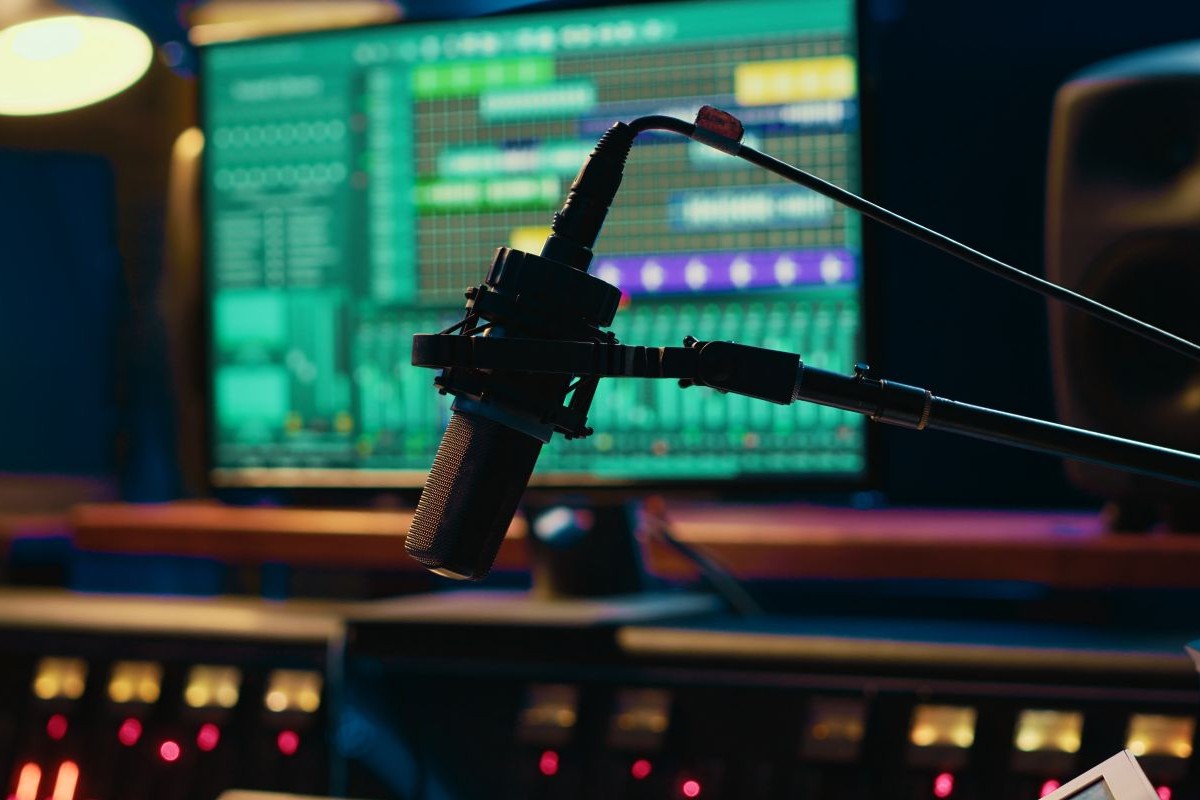
South Africa Animation Studio: Lip Syncing in Animation
Have you ever started watching a film that sounded exciting based on its action-packed description, only to have your enthusiasm fade as soon as you noticed something off? The actors’ mouths move, but the words you hear do not match the movement. You quickly realise that it is an English dub, and now, all you can focus on is the jarring mismatch between the voices and the characters’ lips. Even the voices themselves seem out of place, and suddenly, the plot that you were once so eager to follow has become secondary. Instead, you are more concerned with finding the original film and reading the subtitles to avoid the discomfort. This is exactly the type of issue that can occur in animation, but it is often overlooked. While viewers are focused on the action, characters, or humour, they rarely stop to consider how crucial it is for the character’s mouth movements to match the dialogue. Lip syncing is one of the most essential—and intricate—parts of animation. Without it, the illusion of speech breaks, and what was meant to be an immersive experience can quickly feel disconnected. In fact, this is where an animation studio, such as a South Africa animation studio, comes in. The technical process of lip syncing requires a fine-tuned balance of creativity and precision, ensuring that every word feels natural and believable. This article will delve into why lip syncing is so important and how it works. We will explore how modern tools, technology, and techniques have transformed lip syncing, and how these elements are essential in creating authentic character dialogue.
What is Lip Syncing in Animation?
Lip syncing is the process of matching a character’s mouth movements to the words they are saying. In animation, this means that animators carefully design mouth shapes (called phonemes) to correspond to specific sounds in the dialogue. If a character is saying ‘hello,’ the movement of their mouth must reflect the ‘h’ sound, followed by the ‘e’ and ‘l’ sounds, and then the ‘o’ sound at the end.
While this may sound simple, it is far from it. Animators must account for every sound, pause, and intonation in the dialogue to ensure that the character’s speech matches what the audience hears. It is a time-consuming, detailed task that is easy to take for granted, but it is integral to the believability of an animated world.
For animation studios, including a South Africa animation studio, getting lip syncing right is essential to creating that immersive experience that audiences crave. Whether it is for a short film, an advertisement, or a training video, the effectiveness of lip syncing plays a role in the success of the final product.
The Evolution of Lip Syncing
Lip syncing has come a long way since its early days in animation. In the beginning, animators would sketch out each frame by hand to create mouth shapes that aligned with the dialogue. This painstaking process could take hours, but it was necessary to create the illusion that characters were speaking naturally.
As technology advanced, so did the process of lip syncing. The introduction of digital animation tools allowed animators to streamline the process with more precision and efficiency. Today, some studios even use AI-driven tools to predict and generate mouth movements based on audio, significantly speeding up the process and enhancing accuracy.
For a South Africa animation studio, the evolution of lip syncing has meant that animators now have access to a wealth of software and technology that makes the process easier, but no less important. These tools have also allowed for a more refined approach to syncing characters’ facial expressions with their voices.
The Intensity of Lip Syncing
If you have ever wondered how much time and effort goes into lip syncing, consider this: each word spoken by a character requires a precise set of mouth shapes, which must be synchronised with both the character’s voice and the overall animation timing. It is not just about getting the right “A” or “B” shape for the lips—it is also about adjusting for context, emotional tone, and pacing.
The challenge becomes even more intense when animating characters with exaggerated features or specific personality traits. For example, an animated character who speaks quickly might require more dynamic lip movements than one who speaks slowly and deliberately. Animators need to consider the emotion behind the words—does the character sound excited, sad, angry, or joyful? These factors all contribute to the mouth shapes used during lip syncing.
For a South Africa animation studio, ensuring that lip syncing is not only accurate but emotionally appropriate is vital. If the timing is off, or the character’s mouth movements do not match the tone of the dialogue, it can disrupt the entire scene, leaving the audience feeling disconnected from the character.
Cultural and Linguistic Considerations in Lip Syncing
When it comes to international animation, lip syncing becomes even more complex. Different languages have different sounds, rhythms, and structures, and it is important that animated characters’ mouth movements align with the translated dialogue. This process, known as dubbing, requires animators to adjust the character’s lip syncing to suit the new language, which often results in mouth shapes that are different from the original version.
For a South Africa animation studio, this is especially important for projects intended for international distribution. Lip syncing that works perfectly in one language may not be effective in another, and adapting it for different regions requires both technical skill and cultural sensitivity. Dubbing is an art in itself, and it is essential to match the rhythm and tone of the new dialogue without sacrificing the character’s expression.
Consequences of Poor Lip Syncing
The importance of lip syncing is perhaps most evident when it is done poorly. If the mouth movements of an animated character do not match the dialogue, it can create a jarring experience for the audience. The illusion of speech can break, leaving viewers distracted and disconnected from the story. Even worse, when lip syncing is inconsistent or poorly timed, it can result in a comically exaggerated or unnatural appearance, which undermines the entire animation.
For a South Africa animation studio, getting lip syncing wrong can have a significant impact on the overall quality of the production. It is one of those elements that can make or break a viewer’s immersion in the animation. Poor lip syncing may not always be immediately obvious, but once it is noticed, it can be hard to ignore.
Why Lip Syncing is Important
Lip syncing is not just a technical necessity—it is a vital part of making an animated character feel authentic and engaging. When done correctly, it enhances the believability of the character, making them feel like they are genuinely speaking. Without proper lip syncing, animated characters can come across as flat, disconnected, or even robotic.
For a South Africa animation studio, getting lip syncing right is an investment in the success of the project. It directly impacts how the audience connects with the characters. Well-synced dialogue can amplify emotions, help convey character traits, and strengthen the connection between the viewer and the story.
Lip Sync Fails in Animation
- “Final Fantasy: The Spirits Within” (2001): This film is often cited for its lip syncing issues, particularly with early CGI characters. The technology for capturing realistic facial expressions was new at the time, and while the film was visually impressive, critics noted that the characters’ mouths did not always match the dialogue.
- Dragon Ball Z (1990s English Dub): The English dub of “Dragon Ball Z” in the 1990s often exhibited lip syncing issues. The rapid production schedule led to the reuse of Japanese animation with minimal adjustments, resulting in characters’ mouth movements not aligning with the English dialogue. This issue is acknowledged in online discussion forums, where it is noted that mouth movements were random and did not sync with the audio.
Conclusion
Lip syncing in animation is one of those behind-the-scenes details that can make or break an animated video’s authenticity. It may not be the first thing that comes to mind when we think about what makes animation great, but it is a crucial element that helps create an immersive experience. When executed well, it goes unnoticed—an indication that the animation is doing its job. But when it falters, it is immediately noticeable, pulling viewers out of the experience.
From the early experiments of Snow White and the Seven Dwarfs to the complex digital techniques of modern animation, lip syncing has come a long way. But one thing has remained constant: the effort to make sure a character’s mouth movements align with their words. And that effort is what transforms a simple drawing into a character we can believe in.
Next time you watch an animated video, take a moment to appreciate the work that goes into matching those mouth movements with the dialogue. It is an art form that ensures the characters you love remain as authentic and alive as they can be.
The difference between ‘okay’ and ‘wow’ in animation often comes down to lip syncing. If you’re ready for the real deal, Sound Idea Digital can help. Reach out today and let’s get your project perfectly aligned!
We are a full-service Web Development and Content Production Agency in Gauteng specialising in Video Production, Animation, eLearning Content Development, Learning Management Systems, and Content Production.
Contact us for a quote. | enquiries@soundidea.co.za | https://www.soundideavideoproduction.co.za| +27 82 491 5824 |

